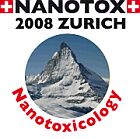First International Conference on Nanotoxicology
Nanoresearchers evaluate the risks of the new technology

|
Nanotechnology is making its entrance in ever more fields, but associated knowledge about possible undesirable effects is lagging behind. The biological effects of the tiny particles, and their consequences for the environment, are nowhere near as intensively researched as new applications. In order to close the gap a little, top nanotoxicology researchers are meeting in Zurich from 7th to 10th September. Empa has issued invitations to “Nanotox 2008” in cooperation with ETH Zurich and Bern University. It is the first large international conference in Europe devoted exclusively to the biological effects of nanoparticles and nanomaterials. “In order to use nanotechnology responsibly, we need to acquire knowledge about its biological effects,” says Harald Krug, Head of “Materials Biology Interactions” at Empa, who has also organised “Nanotox 2008”. Ultimately, many decision makers have really neglected research into the risks of nanotechnology. Krug fears that this could one day lead to the enthusiasm for nanotechnology turning into panic: “We are wasting a historical opportunity to achieve a technical revolution if we do not investigate the possible negative aspects of the new technology just as intensively as the benefits. We will only achieve acceptance for the new technology if we talk to the decision makers and the public about the risks as well.” This conference will make a contribution to this objective and open dialogue. The response shows how urgent this topic is. Long before applications closed, 270 participants from 29 countries had already registered, thus booking up the conference hall. The blocks of scientific lectures for “Nanotox 2008” deal first with the particular properties and biological effects of nanoparticles and various “exposure scenarios”, i.e. the question as to what extent people are exposed to nanoparticles in the workplace or in the environment. Other key topics include effects on the lungs and the issue as to whether nanoparticles can damage genetic make-up and how our immune system reacts to the tiny intruders. The influences on the environment and a foresighted risk assessment will also be dealt with. 125 scientists will be presenting their research results in the form of posters. There will be awards for the five best studies. You can find the detailed conference program at www.nanotox2008.ch. As interest is so great, please register as soon as possible with . Tel. +41 71 274 7664. The conference is being held in the ML building of ETH Zurich, Tannenstrasse entrance. |
||
|
Further information
|
||
|
||||
|
||||
